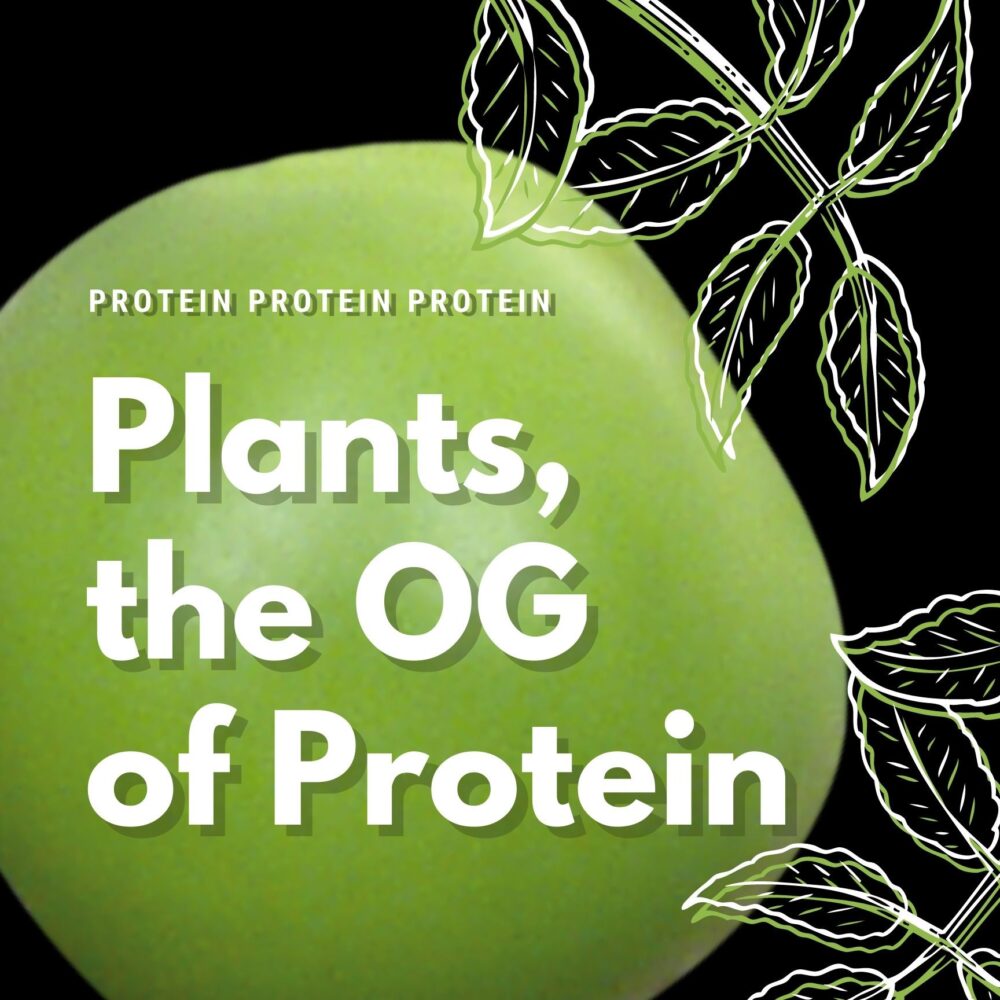Kicking it off with plant protein
When it comes to protein, meat might be the thing you think of after all meat is the “King of Protein”, or so I have been told my entire life. So you may think meat is the logical place to start a series of blogs on protein, #talkingprotein, but I beg to differ. The logical place is to start at the beginning, the first proteins of life.
Plants, the OG of Protein

Plants have existed for millennia and are the original source of protein and were evolutionary building blocks of all living creatures, including ourselves. Unlike humans who are heterotrophic, meaning we rely on food, including essential proteins to sustain life, plants are autotrophic, they produce their energy, including proteins. Plants need to produce their proteins to transport nutrients, provide intracellular structure and to assist in the absorption and reaction to light. To produce their proteins, plants form amino acids through nitrogen assimilation, in which nitrogen (nitrates and ammonium) is absorbed from the soil. If plants are the OG, then maybe nitrogen is the “King of Protein”, without it the world we rely on wouldn’t exist.
Legumes provide future protein for the next generation of crops
Nitrogen is essential in the life of plants and protein. Agricultural crop production relies heavily on the use of nitrogen fertilizers to provide crops with the necessary nutrients to thrive. Nitrogen fertilizers (synthetic and organic sources) offer both a balance to the soil quality, plant nutrition, but also the plants’ health and producers’ economic returns. A healthy plant will be more bountiful in yield and profits. For legume crops, however, nitrogen fertilizers are not necessary, through nitrogen fixation these crops convert nitrogen gases from the air and fixes the nitrogen into nodules in its root system to supply itself with the future protein food. This is beneficial to the plant, and future crops, as it produces its own nitrogen food, and leaves nitrogen in the soil for future crops to access. Recently North America has seen an increase in acres for legume crops, as they are both environmentally beneficial crops, but they have also increased in profitability for producers. Given the environmental gains which legume crops can offer, they also have grown in popularity as a ‘sustainable’ alternative of protein.
Small but effective
Thanks to the growing demands, marketing, ‘sustainability’ and increased profitability of producing ‘protein’ crops, consumers are seeing and hearing more about plant proteins. What needs to be remembered about plant protein is that they are not equal in quantity. Instead, we should think about what amount of protein is daily recommended? The average woman and man need 46 g and 56 g of protein, respectively. So let’s look at the quantity of proteins in a food serving and see how it could be both very filling and daunting if we chose to source all of our protein requirements from one plant a day. I’m not suggesting you eat just a single plant protein a day, the table merely helps put into context the volumes required, when compared to an animal protein, such as a steak or glass of cow milk. When it comes to achieving your daily protein from plants you might need to eat more in sheer volume, but you have the benefits of being full, sourcing fibre and other nutrients which have health benefits far great than what can be explored in this mere blog.

Source: WebMD Food Calculator, 2015 (source originally from ESHA Research, Inc., Salem, Oregon)
A healthy dose of plant protein
There are benefits to having plants in our diet, I can’t imagine a dietician recommending you cut them out of your diet. The magic of plants is that they offer us a spread of different nutrients, and offer carbohydrates, fibre, lipids and protein. As a bonus, plants have beneficial advantages such as carbon sequestration, and nitrogen fixation by the legume family. However, relying on plants as a sole protein source is not as easy as sourcing from an animal product, as shown in the above. In our next blog, we explore the ‘trends’ in processed plant proteins, and how to find a balance that works for you.


